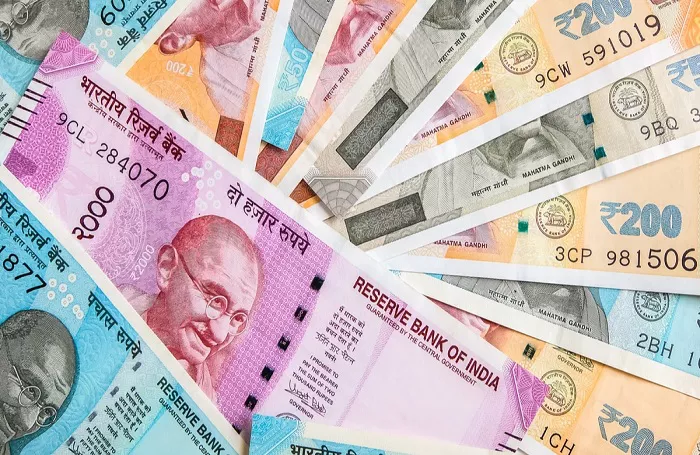In the early European trading session on Monday, the Indian Rupee (INR) faced downward pressure, with the USD/INR pair registering gains. The ongoing trade war, sparked by US President Donald Trump’s expansive tariff policy, continued to cast a shadow over the Indian currency.
Trump’s decision to impose a 26% tariff on imports from India, effective April 9, as part of his broader plan to levy duties on all US imports, sent shockwaves through the markets. This move disrupted trade and supply chains, causing investors to reevaluate their positions in the INR. The trade war’s intensification led to increased selling pressure on the Indian Rupee, as it became a victim of the global trade unrest.
However, there was a glimmer of hope for the INR in the form of falling crude oil prices. As the world’s third – largest oil consumer, India stands to benefit from lower crude prices. Reduced costs for oil imports can help alleviate the pressure on the country’s current account deficit and potentially limit the INR’s losses. This factor provided a partial buffer against the negative impact of the tariffs.
Awaiting the RBI’s Interest Rate Decision
Investors across the globe are now eagerly awaiting the Reserve Bank of India’s (RBI) interest rate decision, scheduled for Wednesday. In the face of tariffs that threaten to derail global economic growth, market expectations are high that the RBI will cut rates by 25 basis points (bps). A rate cut is seen as a measure to boost the economy by encouraging borrowing and spending.
The RBI’s decision – making process is complex. Its mandate is to maintain price stability while promoting growth, with a target inflation rate of 4%. Amid the trade – war – induced economic uncertainty, the central bank may opt for a rate cut to stimulate the economy. However, such a move could also have implications for the INR’s value. A rate cut typically weakens a currency, as it makes holding that currency less attractive for foreign investors seeking higher yields.
Economic Data and Market Outlook
The release of economic data also added to the market’s complexity. The HSBC final India Services Purchasing Managers’ Index (PMI) showed an improvement in March, rising to 58.5 from a preliminary estimate of 57.5. The HSBC Indian Composite PMI also increased to 59.5 in March, up from a preliminary reading of 58.6. These figures indicated a degree of resilience in the Indian services and overall economy.
On the US side, the labor market data painted a mixed picture. The US Nonfarm Payrolls (NFP) rose by 228,000 in March, far exceeding the revised February figure of 117,000 and market expectations of 135,000. However, the US Unemployment Rate ticked up to 4.2% in March, higher than both the previous rate of 4.1% and the forecast of 4.1%. Average Hourly Earnings increased 0.3% month – on – month in March, in line with market expectations, but the annual rate of Average Hourly Earnings rose 3.8%, the lowest level since July 2024. Federal Reserve (Fed) Chair Jerome Powell warned that Trump’s tariffs could lead to an increase in inflation, which might remain elevated.
Technical Outlook for USD/INR
From a technical analysis perspective, the USD/INR pair’s outlook remains bearish in the long term. The pair’s price is currently below the key 100 – day Exponential Moving Average (EMA) on the daily timeframe. This indicates a downward trend, with the 100 – day EMA acting as a resistance level at 85.87. Any attempt by the INR to strengthen and push the pair above this level would face significant hurdles.
The 14 – day Relative Strength Index (RSI), which stands near 38.90 below the midline, further supports the bearish view. The RSI is a momentum oscillator that measures the speed and change of price movements. A reading below 50, especially in the current range, suggests that the path of least resistance for the USD/INR pair is downward.
On the support side, the initial support level for the pair is at 85.20, the low of April 3. If the selling pressure continues, the pair could drop to the psychological level of 85.00. An additional downside level to watch is 84.84, the low of December 19. On the upside, if the pair manages to break above the 100 – day EMA, it could potentially climb to 86.48, the low of February 21, and eventually reach the round figure of 87.00.
The Role of the Reserve Bank of India
The Reserve Bank of India plays a crucial role in maintaining the stability of the Indian economy. Its primary objectives are to keep inflation in check and support economic growth. To achieve these goals, the RBI uses interest rates as a key tool. When inflation is above the 4% target, the central bank may raise interest rates to cool down the economy and support the Rupee. Conversely, when inflation is too low, it may cut rates to stimulate borrowing and spending, although this can have a negative impact on the currency.
In addition to managing interest rates, the RBI actively intervenes in the foreign exchange (FX) markets. Given India’s heavy reliance on foreign trade, especially in oil, the central bank aims to keep the exchange rate within a stable range. It does this by buying and selling Rupees in the spot market at key levels and using derivatives to hedge its positions, protecting Indian importers and exporters from excessive currency risk during periods of market volatility.
In conclusion, the USD/INR pair’s movements are being closely watched by investors as they navigate the complex landscape of Trump’s tariffs, global economic data, and the RBI’s upcoming policy decision. The future direction of the pair remains uncertain, with multiple factors at play that could tip the scales in either direction.
Related Topics:
US Imposes Sweeping 26% Tariff on Indian Goods, Sending USD/INR to Multi-Month Highs
USD/INR on the Upswing as Trump’s ‘Liberation Day’ Approaches
USD/INR Gains Ground Amid Global Trade Jitters; US PMI Data in the Spotlight


